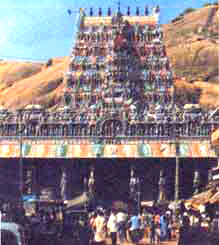
Kerala is a land of great natural beauty and awe inspiring scenic backgrounds. It is believed to be a gift of the Arabian Sea. With its long coastline, beautiful tranquil beaches, emerald backwaters, luxuriant hill stations, waterfalls plantations, striking flora and fauna truly seems to be gods own special country.
LocationKerala is on the southernmost tip of India. It extends along the coast of the Arabian Sea and is separated from the rest of the India by the stunning Western Ghats. From the majestic heights of the Western Ghats the country rolls west, displaying a vista of still rich green valleys.
DestinationsKerala is the perfect destination for families, honeymooner's couples or tourists, with its sandy beaches, blue Lagoons, hill stations, backwaters, plantations, mountain peaks, valleys, wild life parks, forts and temples. The best part about Kerala is that all of these delightful destinations are only a two-hour drive from each other.
BeachesAlong the 600 km Kerala coast there are abundant and unique beaches. Kerala has some of the finest tropical beaches of India, with swaying coconut trees and fishing villages. For the more adventurous soul there is surfing, diving, snorkeling and water skiing along with many other beach sports. Kovalam, Varkala, Shangumugham, Vizhinjam, Alappuzha, Kappad, Payyambalam and Bekal are the most famous and popular beach destinations.
Backwaters & LagoonsKerala's backwaters and lagoons stretch over 1900 km, snaking and twisting all over the land. These backwaters act as water ways for the transport of people and goods. Sometimes they are the only link between remote, inaccessible villages and towns. It's an unbelievable experience to travel or just laze around on these lagoons in a canoe or houseboat and absorb the sights and sounds of Kerala. The bluish waterways and the green land blend to create a mood that is both serene and unreal. The slow watery highways twisting between palm laden banks create a magical aura making you forget the rest of the world. The best way to travel in these water lands is to hire a houseboat, which have rooms, bathrooms, open-sided lounges, and kitchens, on board. Alumkadavu, Calicut, Kumarakom, Alleppey, Cochin, Quilon, Veli Tourist Village, Tourist Village at Akkulam have the most beautiful and overwhelming waterways.
Hill stations Kerala's hill stations are breathtaking with majestic mountains, valleys, waterfalls, plantations, paddy fields and a rich variety of flora and fauna. Wayanad, Ponmudi, Nelliyampathy, Munnar, Idukki, Devikulam, Peerimade, Lakkadi, Malampuzha and Wagamon are the more famous hill stations of Kerala.
Wildlife Conservation ParksKerala shares its beautiful and bountiful land with a variety of exotic wildlife, which can be found in its many conservation parks. The endangered Nilgiri Tahr, and tigers can be found among the many other beautiful creatures. There are many famous parks like Eravikulam National Park, Silent Valley National Park, Periyar Wildlife Sanctuary, Thattekad Bird Sanctuary, Parambikulam Wildlife Sanctuary, Idukki Wildlife Sanctuary, Chinnar Wildlife Sanctuary, Aralam Wildlife Sanctuary, Peppara Wildlife Sanctuary, Neyyar Wildlife Sanctuary, Peechi - Vazhani Wildlife Sanctuary and Nagarhole Wildlife Sanctuary.
Historical SitesKerala has been the gateway for many cultures and religions into the subcontinent of India. Kerala has a multifaceted and colorful history, resulting in a rich cultural heritage and awe-inspiring monuments and places of worship. These monuments and places of worship are spread all over Kerala and represent the history of Kerala through their varied architectural wonders. There are many famous palaces, temples, forts and museums, the most famous ones are,
Palaces- Alwaye Palace, Bolghatty Palace, Kanakakkunnu Palace, Koyikkal Palace, Krishnapuram Palace, Kuthiramalika palace, Shakthan Thampuran Palace, Mattancherry Palace, Padmanabhapuram Palace, Pazhassi Raja's Tomb
Forts- Bekal Fort, Pallippuram Fort, Tipu's Fort, Thalassery FortMuseums-Hill Palace Museum, Cheruthuruthy traditional art center, Napier Museum Town Hall and Archaeological Museum, Thrissur Art Museum, Shri Chitra Art Gallery
Temples and Religious places- Edakkal Cave, Jewish Synagogue, Kaviyoor Stone Temple, St. Francis Church,
Experiencing the natural beauty of Kerala you just might be inspired to think, that Kerala is not just God's own country, but actually a part of God's paradise on earth.
Travel to the tropical beaches, fragrant spice plantations, beautiful wildlife sanctuaries and scenic hill stations of Kerala on Tours to Kerala India.
 While most people visit Agra to see the Taj Mahal, Agra, once the capital of all of India, has more to offer. Less than 2 kilometers from the Taj Mahal, on the same river bank, you’ll find the impressive Agra Fort. The Agra Fort has won the Aga Khan Award for Architecture in the year 2004 and India Post has issued a Stamp to commemorate this prestigious award on 28.11.2004.
While most people visit Agra to see the Taj Mahal, Agra, once the capital of all of India, has more to offer. Less than 2 kilometers from the Taj Mahal, on the same river bank, you’ll find the impressive Agra Fort. The Agra Fort has won the Aga Khan Award for Architecture in the year 2004 and India Post has issued a Stamp to commemorate this prestigious award on 28.11.2004.














